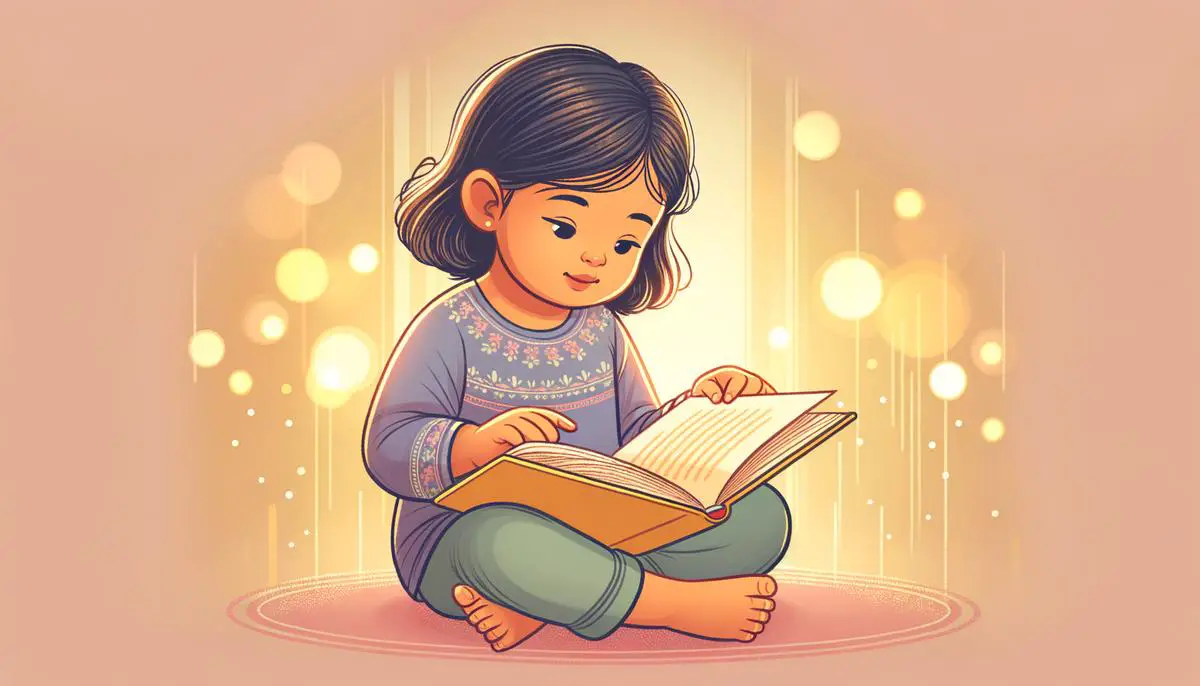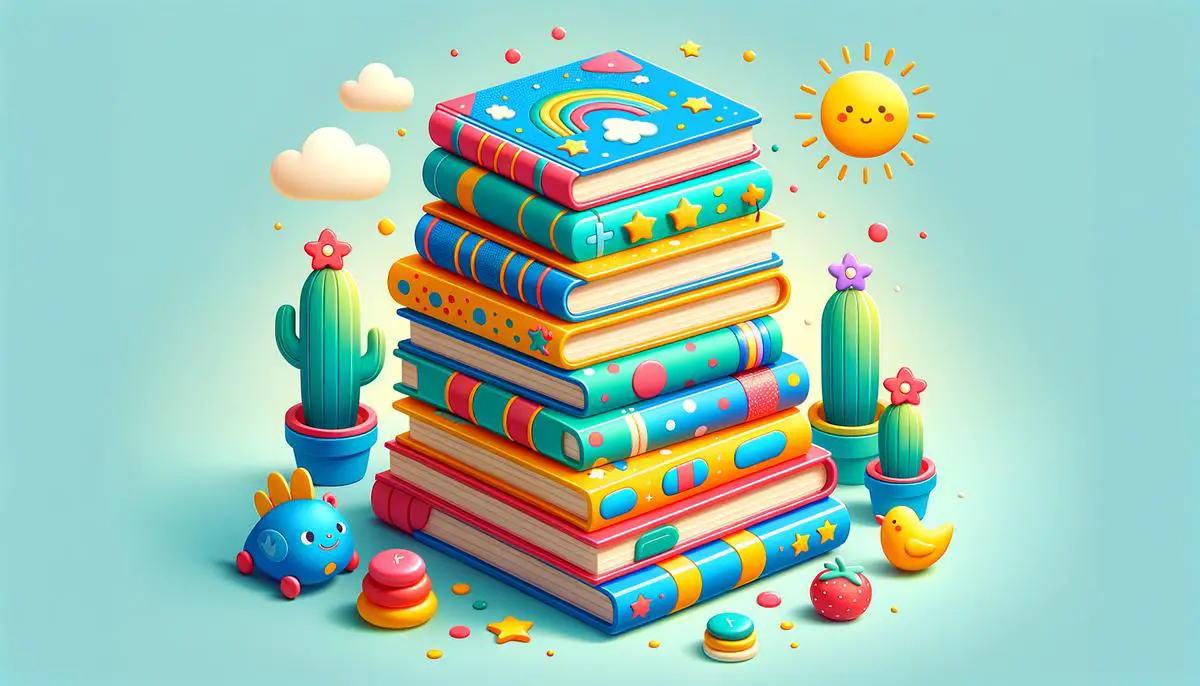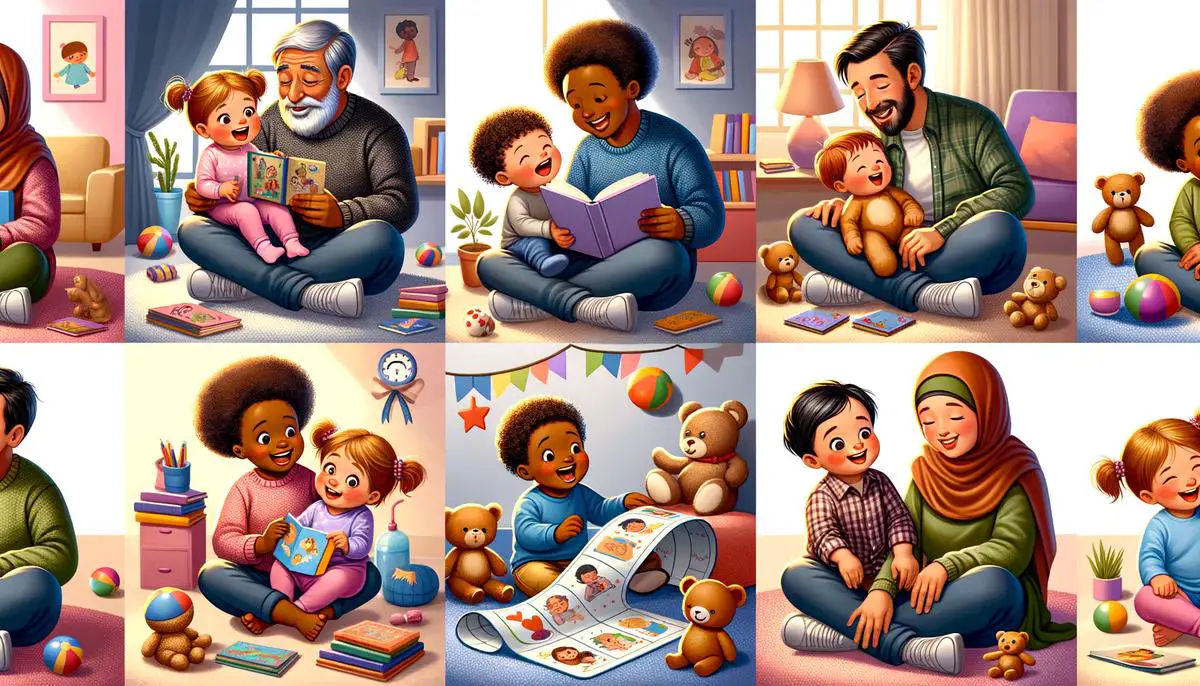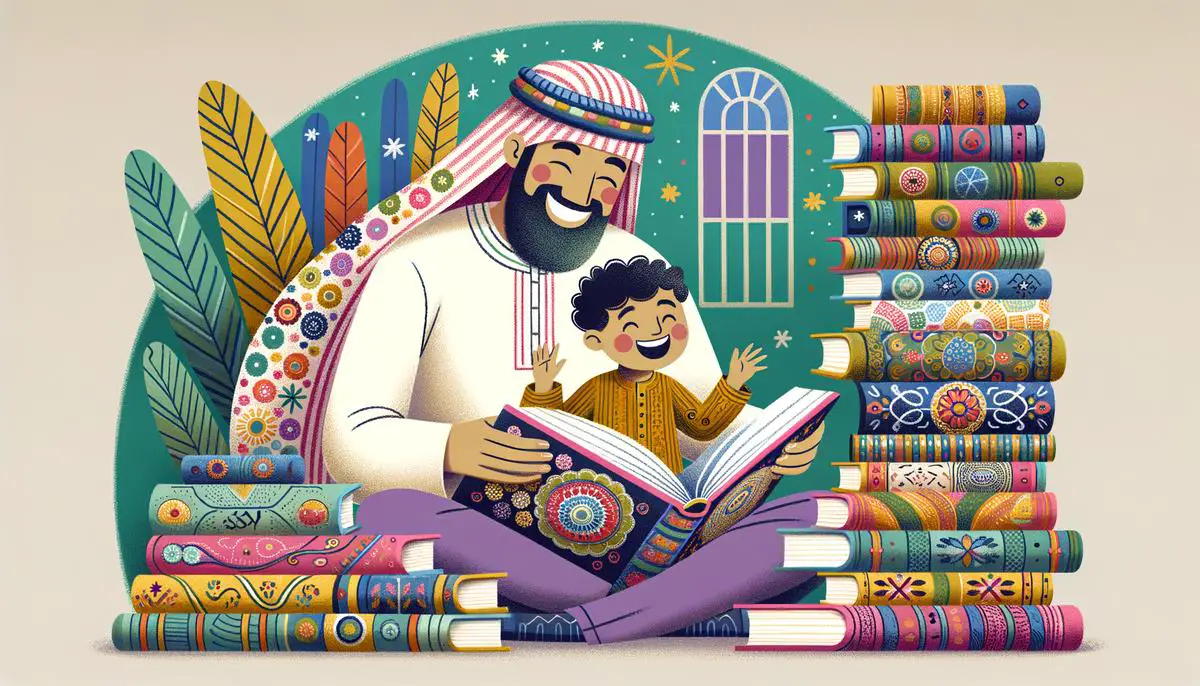Reading to toddlers opens up a universe of growth opportunities, far beyond the simple turning of pages. It’s a journey through language, emotions, and the boundless landscapes of imagination. Each story shared is a brick laid in the foundation of their developing minds, inviting us to consider the profound impact of this seemingly simple activity.
The Magic of Storytime
Reading to toddlers is more than just a bedtime ritual; it’s a powerful step towards their growth. Every story, every picture, and every word shared opens a new door in their developing minds. Engaging in storytime isn’t just entertaining for them; it lays down the bricks for building a strong vocabulary foundation. Why? Because when we read to little ones, we expose them to words and phrases we might not use in daily conversation. This exposure is like planting seeds in a garden, which, with enough care, will grow into a rich forest of words they can pull from when they start to speak and write.
But it’s not all about words. Reading stories makes room for toddlers to explore different worlds beyond their own. Through tales of far-off lands, mystical creatures, and everyday adventures, they learn that there’s so much more to the world than what they see around them. This is where empathy begins to bud. By walking in the shoes of a character, toddlers learn to understand and share feelings, a skill that is crucial in weaving meaningful relationships throughout life.
Moreover, the act of sitting together with a book fosters closeness and bonding. In a world that spins faster every day, these quiet moments provide a sense of security and comfort to toddlers. They learn that despite the day’s adventures or misadventures, this time together is constant. It’s here that they feel seen and heard, without the need for words.
Books are windows that let in light, illuminating the pathways of imagination. Have you ever watched a toddler’s face as they flip through a book? That spark in their eyes is not just excitement; it’s the birth of creativity. By introducing them to different scenarios, characters, and outcomes early on, we’re providing them with the tools to invent, think critically, and solve problems creatively as they grow.
And let’s not forget the technical side of things. Storytime is a classroom where toddlers absorb the sounds and rhythms of language, crucial building blocks in learning to read by themselves when the time comes. The turn of each page invites them to connect the dots between sounds, symbols, and meanings, setting the stage for reading success in the future.
To wrap it up, while it might just seem like flipping through pages of colorful illustrations and whimsical narratives, reading to toddlers is key in unlocking their potential. It’s a simple yet profound way to equip them with the skills necessary for a successful journey in learning and life. From expanding vocabularies to fostering empathy, encouraging creativity, and reinforcing bonding, storytime is indeed a cornerstone in their developmental journey.

Choosing the Right Books
Choosing books for tiny tots involves a keen eye for what sparkles their interest and nurtures their budding brains. Did you know that the texture of a book’s pages or its cover can make a big difference? Little hands love to explore, and books with varied textures invite them to touch, feel, and engage more fully with the story. It turns the page at a time into a tactile adventure that can significantly amplify their excitement about reading.
Bright, bold colors are like magnets for young eyes. Books that showcase a rainbow of hues not only keep toddlers hooked but also help them learn to identify and name different colors. This visual feast can stimulate their curiosity and makes the act of reading more delightful.
The rhythm and rhyme of a story matter more than you might think. Books with a singsong or rhythmic quality captivate toddlers, making the narrative easier for them to follow and remember. It’s like music to their ears, literally, and they often find joy in the predictability of rhyming tales.
Now, consider the power of repetition. Stories that employ repetitive phrases or scenarios allow tots to anticipate what comes next, giving them a sense of participation and accomplishment when their predictions ring true. This reinforces their learning and motivates them to keep turning pages.
Interactive elements, such as flaps to lift or buttons that produce sounds, provide an added layer of excitement and keep those tiny fingers busy. Engagement shoots up when children are able to interact directly with the book, blending reading time with playtime.
Books that spark conversations are gold. Opt for stories that pose questions or present scenarios that encourage toddlers to think and respond. Sparking dialogue aids in language development and offers a priceless opportunity for you to connect over shared ideas and curiosities.
The length of the story is crucial. Too long, and you might lose their attention; too short, and they’re left wanting more. Striking the right balance ensures they stay engaged without becoming overwhelmed or bored. Stories that can be read in about five to ten minutes often hit the sweet spot for keeping those wiggly listeners intrigued till the last word.
Lastly, don’t overlook the significance of diversity in themes and characters. Exposing toddlers to a wide variety of cultures, perspectives, and settings broadens their view of the world. Diversity in books not only reflects the myriad of people and places in our global community; it also plants the seeds of understanding, acceptance, and empathy from an early age.
Holding these pointers in consideration makes scouting for the perfect toddler books not just easier but also more meaningful. Each book becomes a door to new discoveries, laughter, learning, and cuddles—woven together into cherished moments between you and your budding bookworm.

Incorporating Reading into Daily Routine
Transform everyday moments into reading alcoves. When cooking, briefly read out recipes aloud, emphasizing the playful sounds of ingredients; let their curious minds connect the dots between words and the world.
Initiate a book exchange with fellow parents to keep refreshing your child’s library. This cycle introduces them to various storytelling styles without the need for constant new purchases.
Storytime doesn’t always mean sit-down time. Blend story narratives with outdoor play; maybe a treasure hunt inspired by a pirate tale, where each clue borrows from the book’s vocabulary.
Incorporate technology wisely by choosing apps that allow toddlers to interact with stories through touch and sound. Though screen time should be limited, ensuring it is engaging and educational can make the digital space a learning tool.
Craft handmade ‘touch and feel’ books tailored to your toddler’s interests, whether it’s dinosaurs or space ships, using materials around the house for textures. This hands-on approach personalizes reading, connecting fondly made memories to the joy of stories.
During bath time, integrate waterproof books with vibrant illustrations. Narratives of underwater adventures can transform a normal bath into an exploration, stirring up waves of laughter and splashes of imagination.
Celebrate their milestones with books. Marking special occasions, be it birthdays or the first day of snow, with themed books enriches the experience, making reading a treasure trove of memories.
Support local libraries by participating in toddler read-aloud sessions. These gatherings introduce children to a communal listening experience, modeling the beauty of shared narratives.
Dialogic reading practices, where you pose questions about the story and encourage your toddler to guess what comes next, not only enhances engagement but also critical thinking.
Allocate a cozy corner dedicated exclusively to reading. Stuffed with soft pillows, blanched in warm lights, this nook can serve as a snug refuge that beckons stories to be unfurled.
Implementing these practical and creative strategies not only folds reading into the fabric of daily life but also sows the seeds of literacy, empathy, and joy in young hearts, cultivating a boundless garden where imagination thrives.

In conclusion, the act of reading to toddlers does more than entertain; it serves as a crucial tool in their developmental arsenal. By weaving together tales that expand vocabularies, foster empathy, and spark creativity, we’re not just passing time—we’re opening doors to a world of possibilities for our youngest listeners. Remember, in the landscape of childhood development, storytime is not just a moment but a meaningful journey towards growth and understanding.
